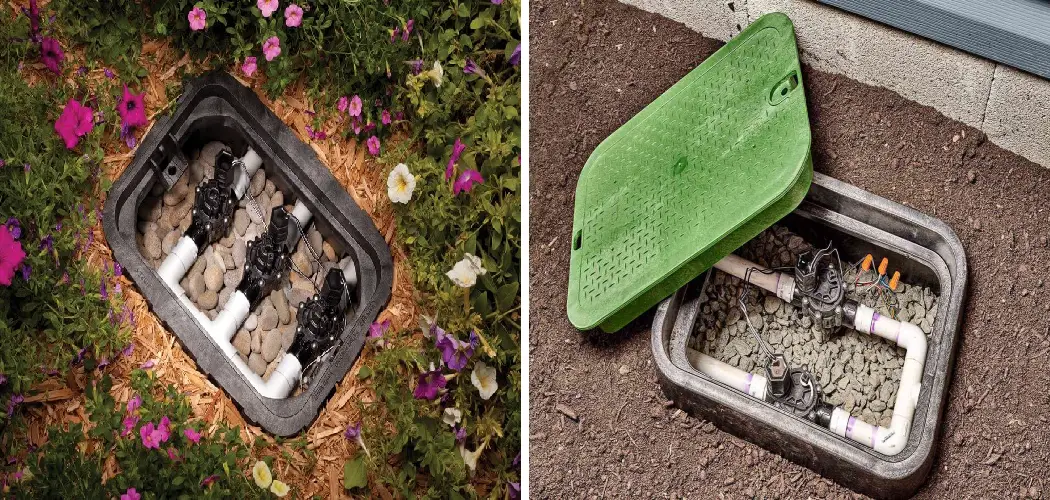Have you ever been working in your yard and noticed this mysterious metal box sticking out of the ground with no apparent purpose? If so, you’ve encountered a valve box – an essential but often overlooked component of your water system infrastructure.
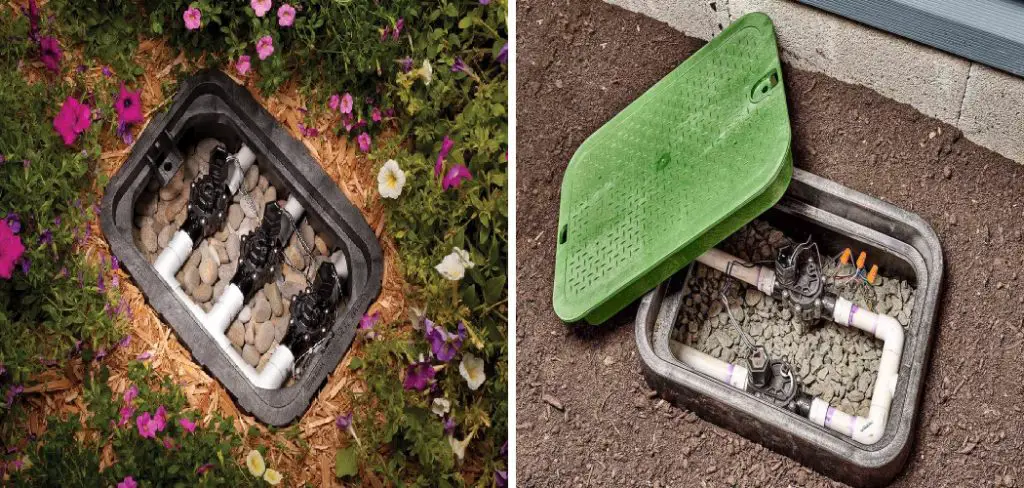
Valve boxes provide access to below-ground water valves that control water flow in pipes. While they may seem mysterious, valve boxes are crucial in maintaining your water system. They are essential to locate for any potential repairs or work on your property’s water lines.
In this post, I’ll explain what valve boxes are, why they’re installed, and how to identify them so you always know how to find a valve box whenever you need access to the buried water valves below.
Necessary Items
To locate a valve box, you’ll need a few essential tools:
- A shovel or garden trowel – for digging around the area where you suspect the valve box may be located.
- A metal detector – if you’re unsure of the exact location of the valve box, a metal detector can help narrow down your search.
- A map of your property’s water system will help you determine the general location of the valve box.
10 Steps on How to Find a Valve Box
Step 1: Locate Your Property’s Main Water Shut-off Valve
Before you search for the valve box, it’s essential to know where your main water shut-off valve is. This is usually found inside your home near the water meter or in a utility box outside.
Step 2: Look for Municipal Water Markers
If you’ve spotted metal discs or markers on your property that have ‘municipal’ written on them, it’s a good indication that there may be a valve box nearby. These markers are typically placed by utility companies to identify the location of underground water infrastructure.
Step 3: Refer to Your Property’s Water System Map
As mentioned earlier, having a map of your property’s water system can help determine the general location of the valve box. You can contact your local water utility company for assistance if you need a map.
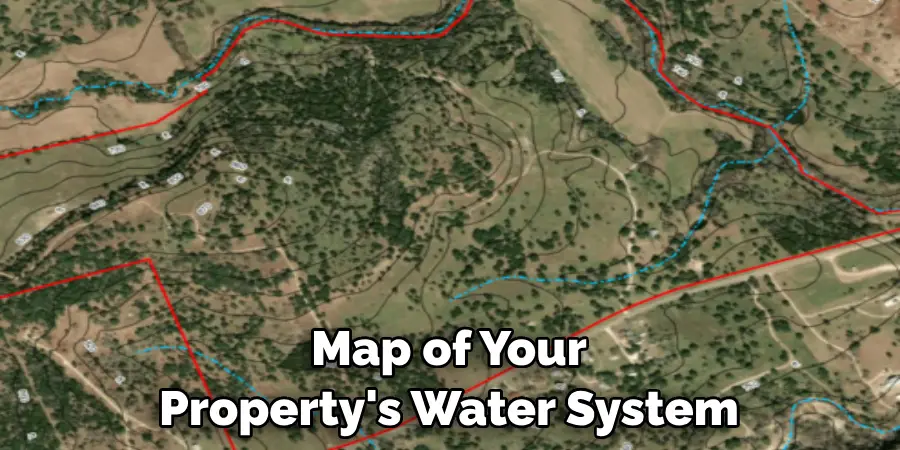
Step 4: Use Your Metal Detector
If you still have trouble finding the valve box, use a metal detector to scan the area. Adjust the sensor’s sensitivity and follow manufacturer instructions for best results.
Step 5: Observe Changes in Ground Texture
Sometimes, the soil above a valve box can feel slightly raised or recessed compared to the surrounding area. This can be a helpful indicator when trying to locate the package.
Step 6: Check Near Sidewalks and Driveways
Valve boxes are often installed near sidewalks or driveways for easier access. Check for a valve box along the edges if these areas are near your property’s water lines.
Step 7: Look Near Landscaping or Garden Beds
Valve boxes can also be found near landscaping or garden beds since they provide easy access to water valves for irrigation systems. Be sure to check around any areas with a higher concentration of plants.
Step 8: Dig Carefully
Once you’ve identified the general location of the valve box, use your shovel or garden trowel to dig around the area carefully. Take caution not to damage any underground pipes or wires while digging.
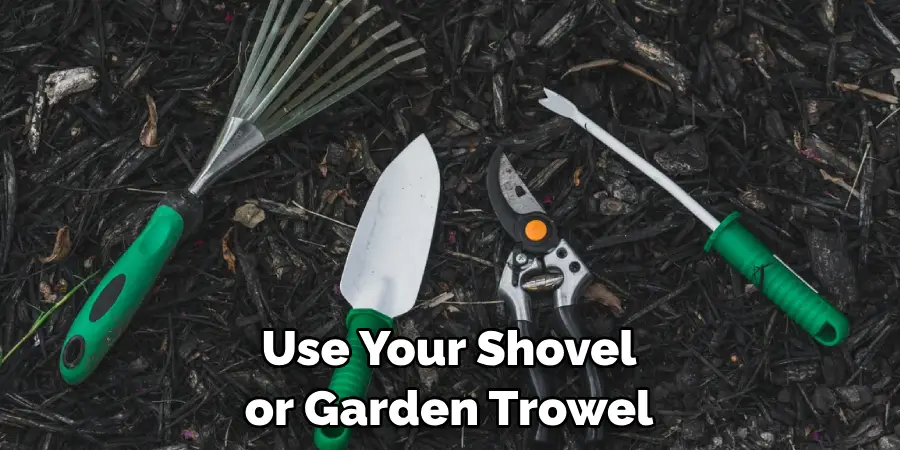
Step 9: Clear Away Any Debris
Valve boxes can sometimes become covered in dirt, leaves, or other debris. Clear away any obstructions to reveal the box more easily.
Step 10: Identify the Valve Box
A typical valve box is a small, rectangular metal or plastic box with a lid that can be opened to access the water valves inside. Once you’ve located it, please take note of its location for future reference.
Valve boxes may initially seem mysterious, but they are crucial to your property’s water system. By following these steps on how to find a valve box, you should be able to locate your valve box with relative ease and better understand how your water infrastructure works.
Remember always to exercise caution when digging around your property, and if you need clarification on anything, consult a professional for assistance. Remember this information next time you come across a mysterious metal box in your yard – it may just be a valve box!
9 Additional Tips
1. Regularly Inspect and Clear Debris from the Valve Box
To ensure easy access to your water valves, it’s essential to inspect and clear any debris from the valve box regularly. This will also help prevent any damage or blockage of the valves.
2. Use a Valve Box Lock
If your property is accessible to others, consider using a valve box lock to prevent tampering or unauthorized use of your water valves.
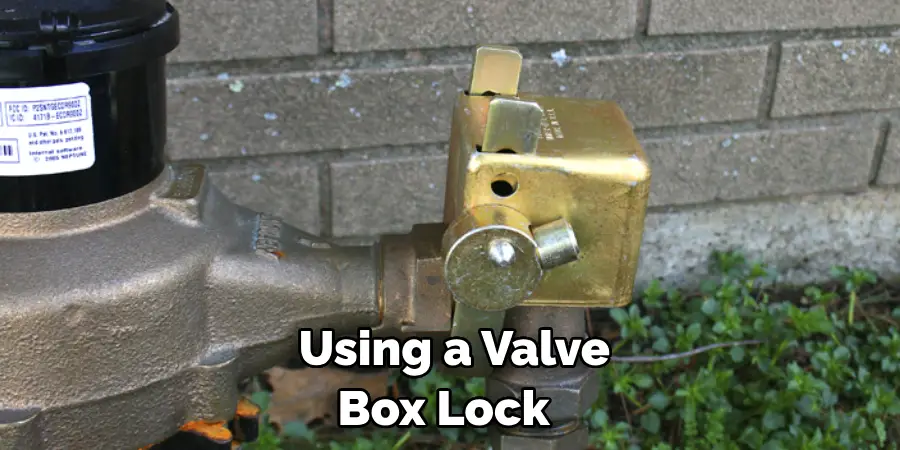
3. Keep a Spare Valve Box Lid
Over time, valve box lids can become damaged or lost. Keeping a spare lid on hand in emergencies is always a good idea.
4. Make Sure the Valve Box is Above Ground
Valve boxes should always be above ground and not buried or covered in any way. This ensures easy access to the water valves when needed.
5. Check for Leaks
While inspecting your valve box, take note of any leaks that may be present. Contact your local water utility company for assistance if you notice a leak.
6. Use Caution when Opening the Valve Box
Be careful when opening the valve box lid, as sharp edges or objects may be inside. Wear gloves if necessary to protect your hands.
7. Keep a Record of Your Valve Box Location
Note down the location of your valve box in case you need it for future reference. This can be especially useful if you change your property’s water system.
8. Contact a Professional for Assistance
If you’re having trouble locating or accessing your valve box, contacting a professional for assistance is always best. They have the tools and expertise to safely handle repairs or maintenance on your property’s water system.
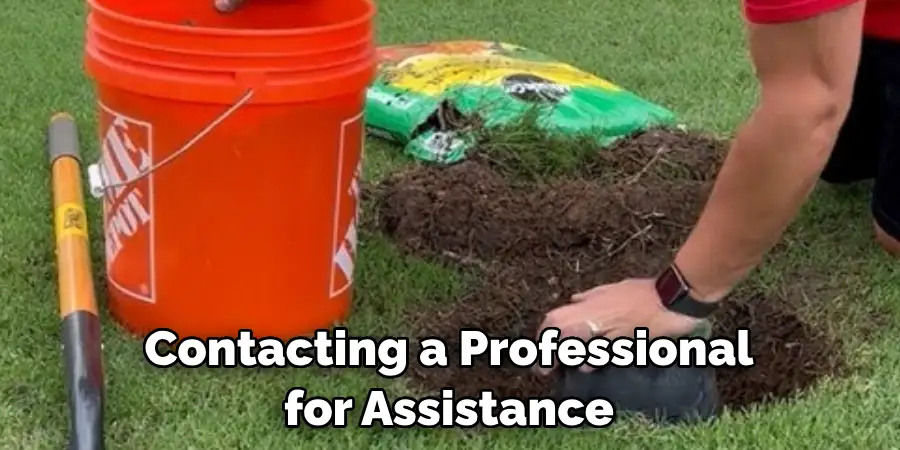
9. Be Mindful of Water Conservation
Valve boxes control water flow into your property, so it’s essential to be mindful of water conservation practices and only use water when necessary. This will help save water and reduce your monthly utility bills.
Remember, every drop counts! By keeping these additional tips in mind, you can ensure the proper care and maintenance of your valve box, leading to a more efficient and sustainable water system for your property. So follow these steps and tips whenever you need to find or work with a valve box on your property.
Overall, proper maintenance and awareness of your valve box can help prevent any costly water-related issues in the future. Following these steps and tips, you’ll be well-equipped to handle any valve box-related tasks on your property. A map of your property’s water system will help you determine the general location of the valve box.
8 Things to Avoid
1. Using Excessive Force when Opening the Valve Box Lid
Avoid using excessive force when opening the valve box lid, which may cause damage or injury. If you need help opening it, contact a professional for assistance.
2. Damaging Underground Pipes or Wires
Be cautious when digging around the valve box area to avoid damaging underground pipes or wires. Contact your local utility company for assistance if you need help determining where these are located.
3. Disregarding Leaks
If you notice a leak in your valve box, don’t ignore it. Contact your local water utility company for assistance to prevent any further damage.
4. Attempting to Repair the Valve Box Yourself
Valve boxes and their components can be complex, so it’s best to leave any repairs or maintenance to a professional. Attempting to fix it yourself may cause more harm than good.
5. Burying or Covering the Valve Box
Never bury or cover the valve box, as this can make it difficult to access in an emergency. Keep it above ground and clear of any obstructions.
6. Using the Valve Box for Non-Water-Related Purposes
Avoid using the valve box for anything other than its intended purpose – accessing water valves. Using it for other purposes may damage the container or valves.
7. Neglecting Regular Maintenance
Regularly inspect and maintain your valve box to ensure it’s in good condition. Neglecting maintenance can lead to costly repairs or replacements in the future.
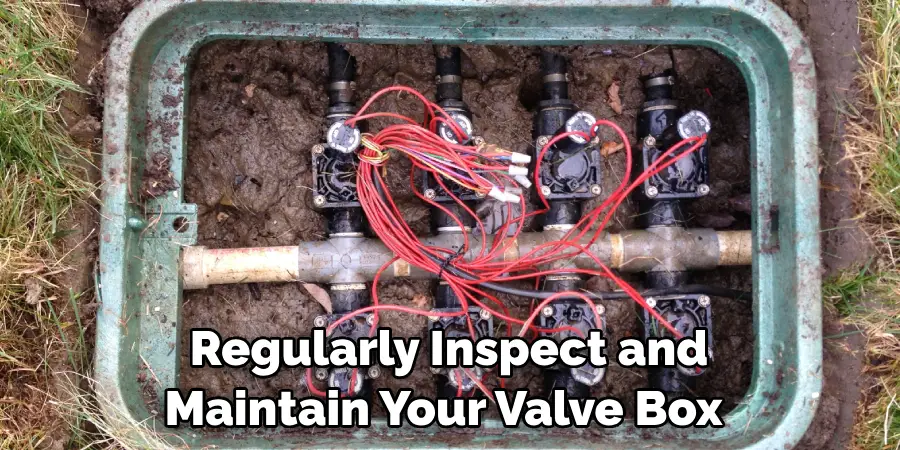
8. Failing to Keep a Record of Your Valve Box Location
If you need to locate your valve box in the future, keeping a record of its location is essential. Failing to do so may result in difficulty or delays when accessing your water valves. By avoiding these actions, you can ensure the proper functioning and longevity of your valve box and prevent any potential issues from arising.
Remember, it’s always best to err on caution and consult a professional if you need clarification on anything related to your valve box. So take care of your valve box, which will take care of you!
Frequently Asked Questions
Can I Use Any Tool to Open the Valve Box Lid?
It’s best to use a tool specifically designed for opening valve box lids, such as a lid key. Using other devices may cause damage or injury. Contact a professional for assistance if you don’t have a lid key.
Should I Fill the Valve Box with Water?
No, you should not fill the valve box with water. This may cause damage to the valves and other components inside. Contact a professional for assistance if standing water is in your valve box.
How Often Should I Check My Valve Box?
It’s recommended to check your valve box at least once every six months for any debris or damage. However, if you notice any issues with your water system, it’s best to check the valve box immediately.
Can I Access my Water Valves Without Opening the Valve Box?
Sometimes, you can access your water valves without opening the valve box. However, it’s still important to regularly inspect and maintain the valve box in case of emergencies or changes to your water system.
What Should I Do if I Notice a Leak in my Valve Box?
Contact your local water utility company for assistance if you notice a leak. They will be able to assess and fix the issue properly. Overall, staying informed and proactive regarding your valve box is essential. Regular maintenance and awareness can prevent any potential problems and ensure the proper functioning of your water system.
What Should I Do if I Can’t Locate my Valve Box?
If you need help locating your valve box, contact a professional. They may be able to use specialized equipment to locate it or help you install a new one if necessary. Remember, never try to dig or search for the valve box yourself, as this may cause damage to your property’s water system. So don’t hesitate to seek professional assistance if needed.
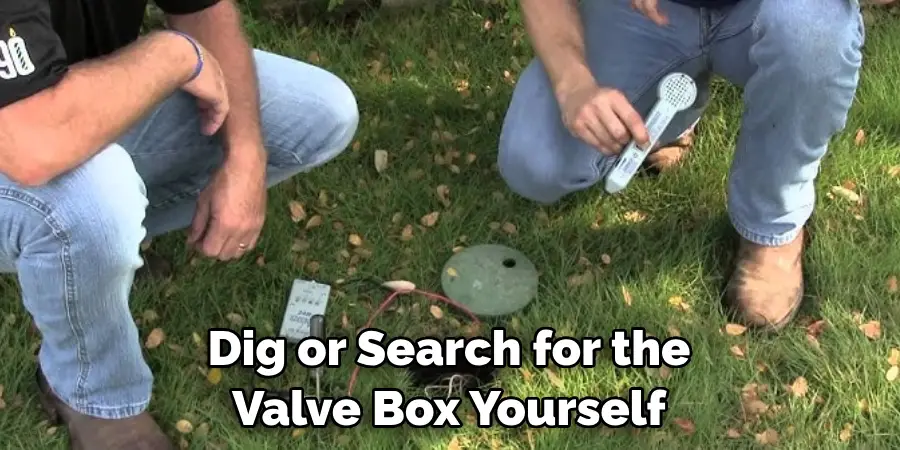
Can I Use the Valve Box Lock in Place of a Lid?
No, a valve box lock is not meant to replace the lid. It’s an additional security measure to prevent unauthorized use of your water valves. Always make sure to have a functioning lid on your valve box. Remember, proper maintenance and care of your valve box is essential for a functioning water system.
By following these tips and avoiding common mistakes, you can ensure the longevity and effectiveness of your valve box. If you have any further questions or concerns, don’t hesitate to contact a professional for assistance.
Conclusion
In conclusion, finding a valve box may seem daunting, but with the proper knowledge and tools, it doesn’t have to be. By following these simple steps and techniques on how to find a valve box, you can quickly locate any valve box on your property. Always start by checking near the main water line and follow any visible pipes or hoses that lead away from it.
Utilize visual cues such as changes in terrain or color to identify potential locations. And feel free to use modern technology like metal detectors or infrared cameras if needed. Taking the time to locate and understand your valve box can save you from potential disasters and expensive repairs in the future.

